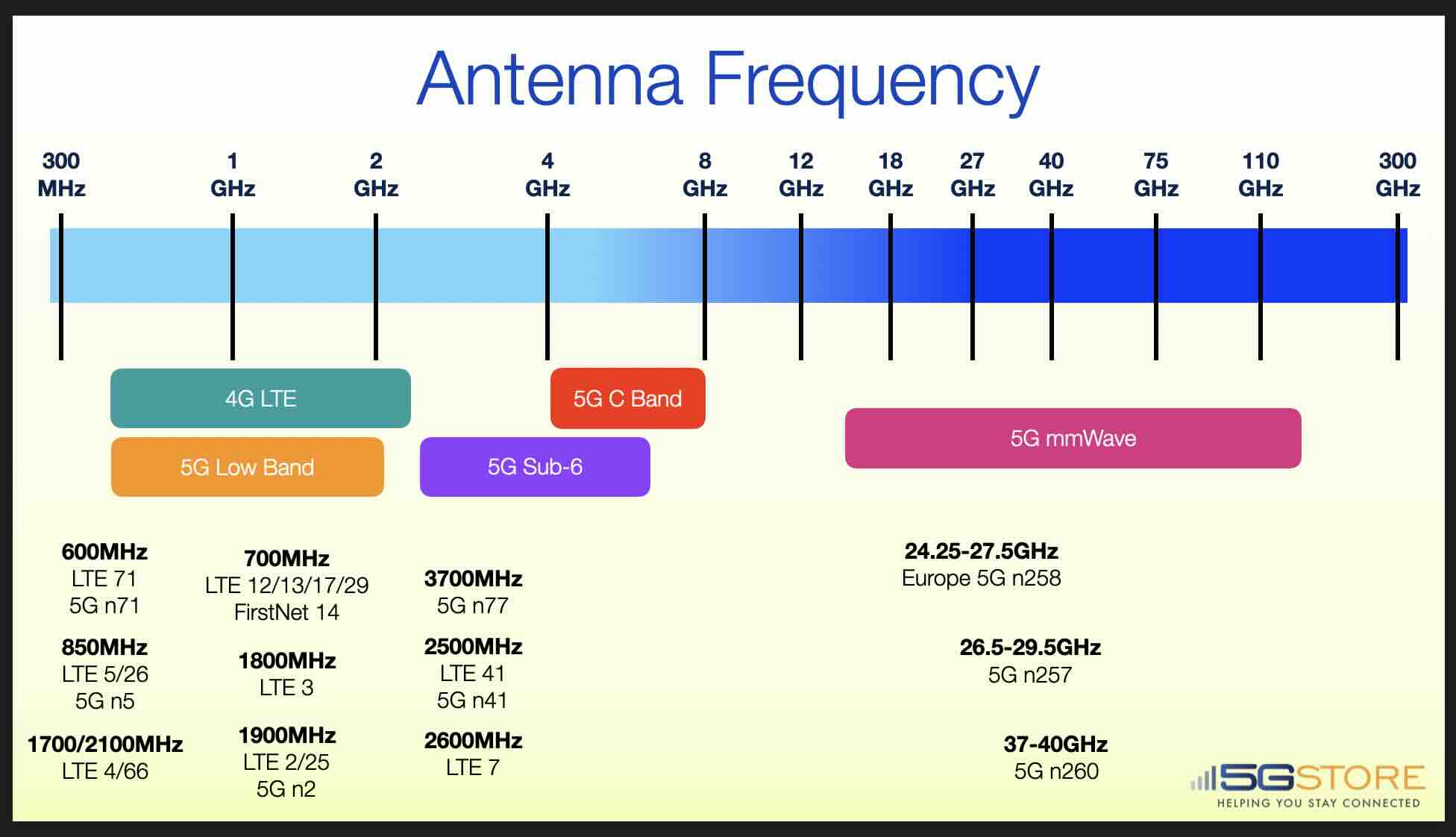


Antennas play a critical role in the transmission and reception of cellular signals. They are designed to emit or receive electromagnetic waves, which carry information such as voice, data, and video, over the air. In the case of cellular networks, antennas are used to communicate between the mobile devices and the base stations. When you make a call or send a message on your smartphone, your device sends the signal to the nearest base station via an antenna, which then relays the signal to its destination.
But what about antenna frequencies? How do they impact cellular communication?
LTE (Long-Term Evolution) and 5G (5th Generation) cellular frequencies are used for wireless communication over cellular networks. LTE and 5G use various frequency bands depending on the region and the cellular operator. Generally speaking, LTE uses lower frequencies than 5G. Some are similar however, but are expanded to include additional frequency ranges (e.g. LTE Band 71 and 5G Band 71). It's important to note that frequency bands used by LTE and 5G vary between countries and network operators.
The use of different frequency bands can impact the speed, coverage, and penetration of wireless signals. Higher frequency bands can provide faster data speeds and lower latency, but they may have lower coverage and penetration compared to lower frequency bands. This is why it's important to choose the right antenna frequency for your specific use case. Whether you're building a cellular network, designing a wireless device, or simply trying to improve the signal quality on your smartphone or modem, understanding antenna frequencies is essential.
At 5Gstore.com, we specialize in providing high-quality antennas for cellular networks, WiFi, and GPS. Our antennas are designed to meet the specific needs of your project, whether you're looking for a low-cost solution for a small deployment or a high-performance antenna for a large-scale network.
5G Band n260 is a millimeter wave (mmWave) frequency band operating between 37 GHz and 40 GHz. This high-frequency spectrum is part of the ultra-high-speed 5G deployment, providing lightning-fast data rates and ultra-low latency. Band n260 is primarily used in urban environments, stadiums, airports, and other high-density areas where network performance and capacity are crucial.
Extreme Data Speeds
Band n260 enables multi-gigabit per second (Gbps) data transfer speeds, making it ideal for bandwidth-intensive applications such as 4K/8K video streaming, cloud gaming, and immersive augmented/virtual reality (AR/VR) experiences.
Ultra-Low Latency
With significantly reduced latency, Band n260 supports real-time applications like autonomous vehicles, industrial automation, and remote surgery, where split-second data transmission is critical.
High Network Capacity
The mmWave spectrum allows for a greater number of simultaneous connections, reducing congestion in crowded areas such as sports arenas, public events, and city centers.
Advanced Enterprise and Industrial Use Cases
Band n260 is an essential part of private 5G networks, supporting businesses, smart cities, and next-generation manufacturing with seamless and reliable high-speed connectivity.
Future-Proof Connectivity
As part of the highest frequency 5G deployments, Band n260 is paving the way for the next evolution of wireless technology, including 6G and beyond.
While Band n260 offers exceptional performance, there are challenges to consider:
Limited Coverage Area: Due to its high frequency, Band n260 has a much shorter range than lower-band 5G frequencies. More small cell infrastructure is needed to ensure widespread coverage.
Weak Penetration Through Obstacles: Signals at 37-40 GHz struggle to pass through buildings, trees, and other solid objects, making outdoor and line-of-sight deployments essential.
Selective Deployment: Band n260 is primarily deployed in urban and high-density areas, meaning availability may be limited in rural or suburban locations.